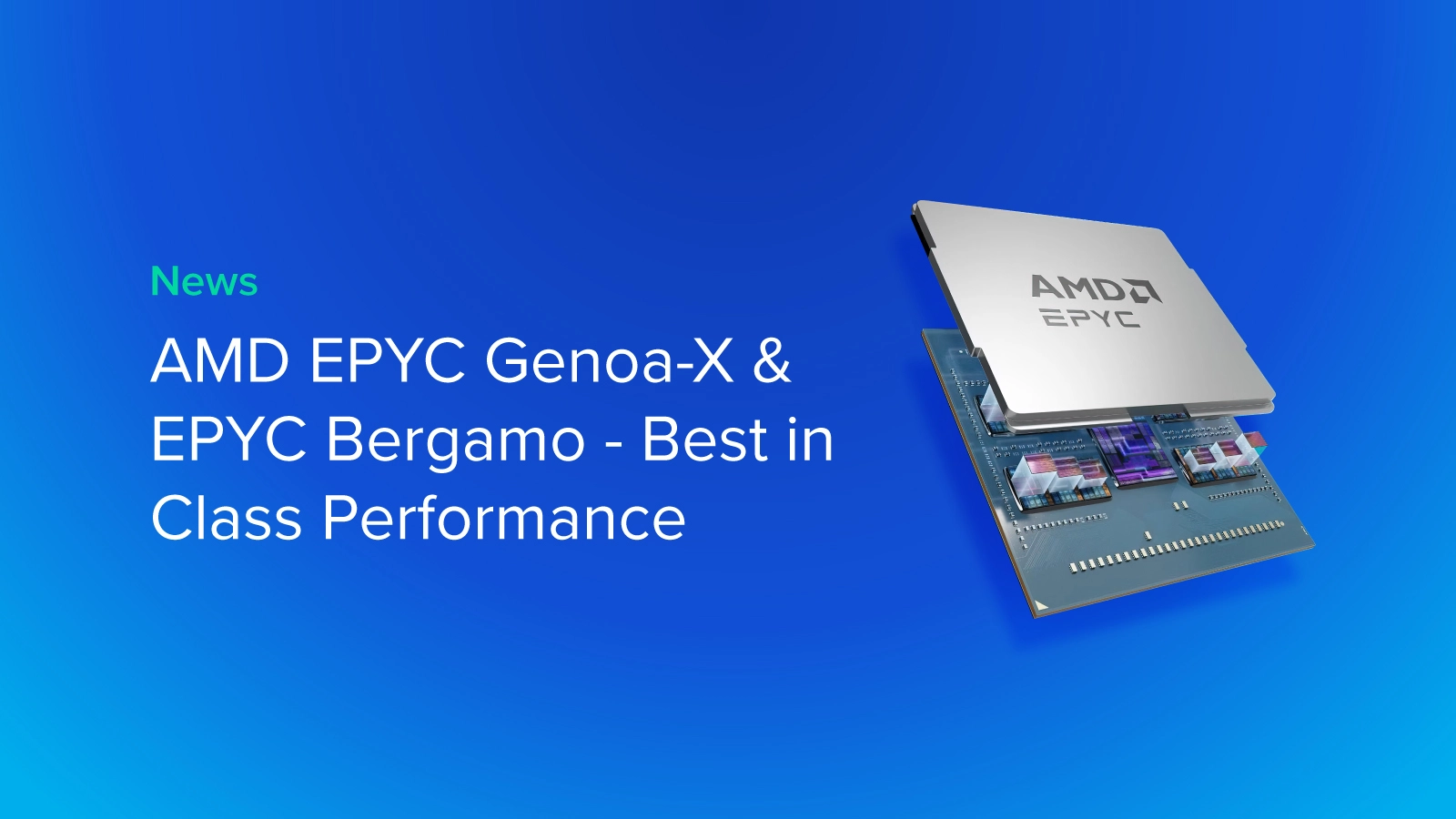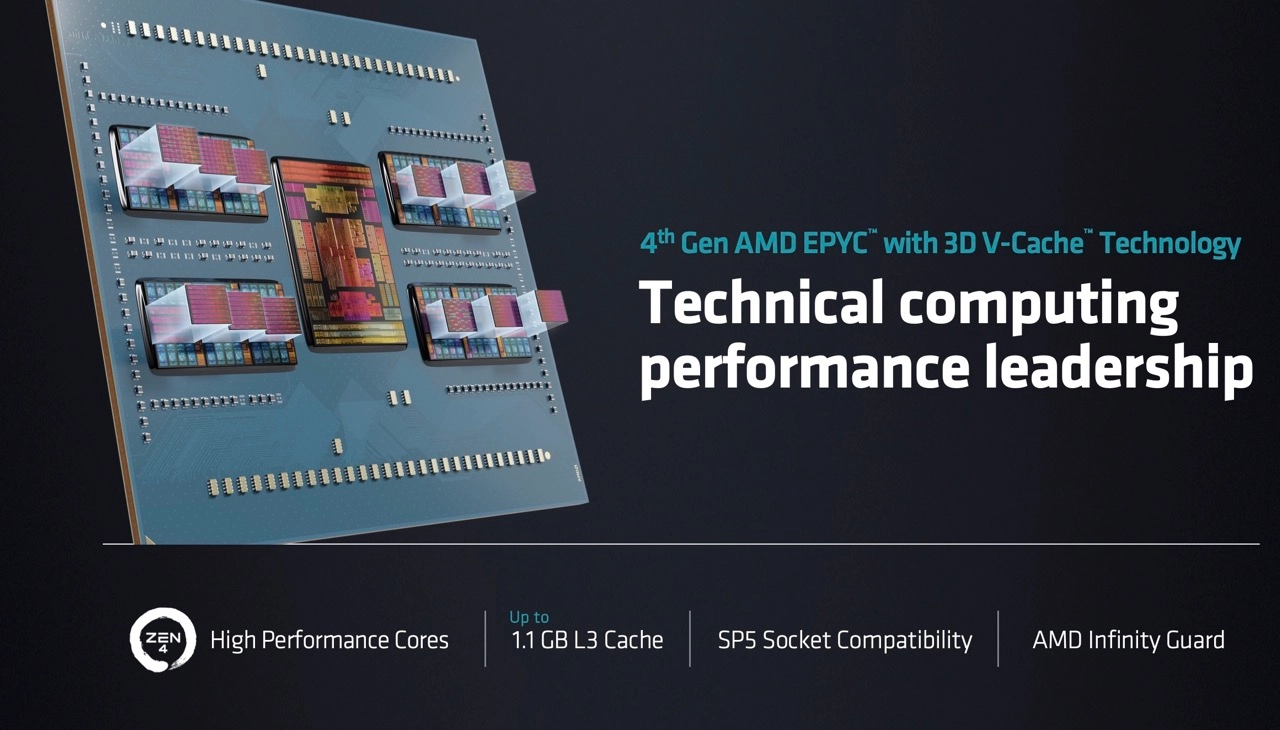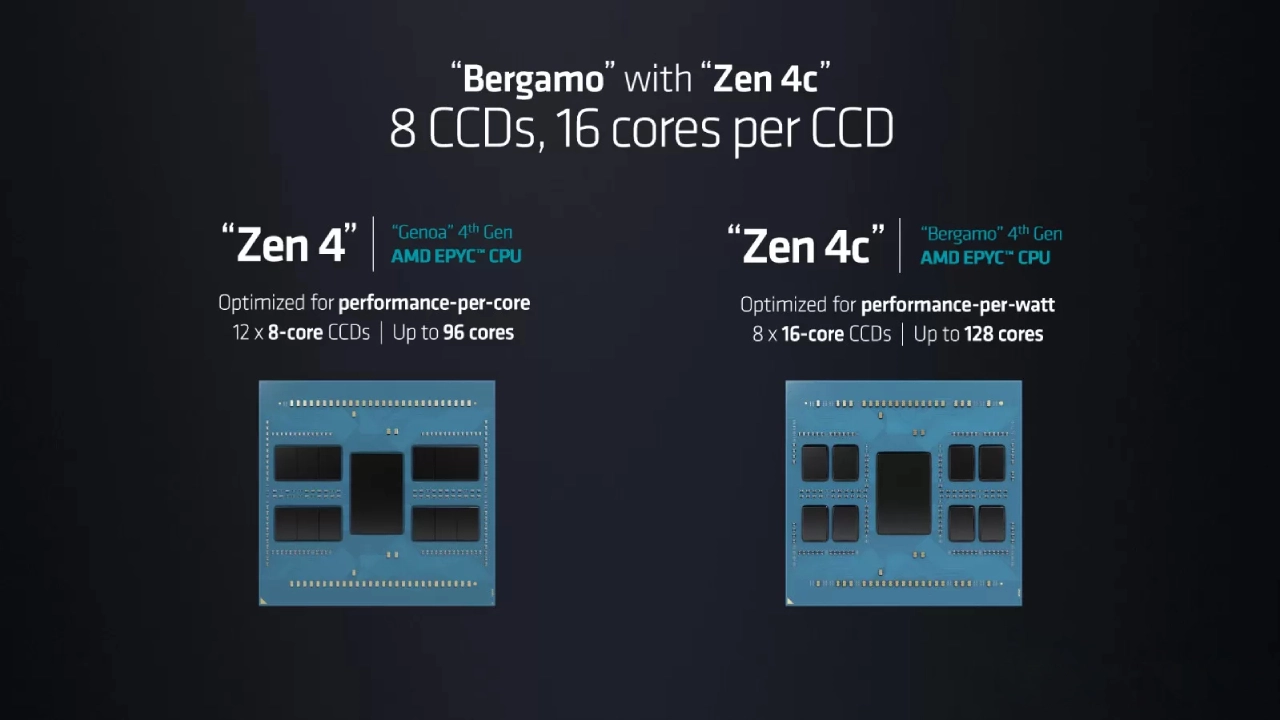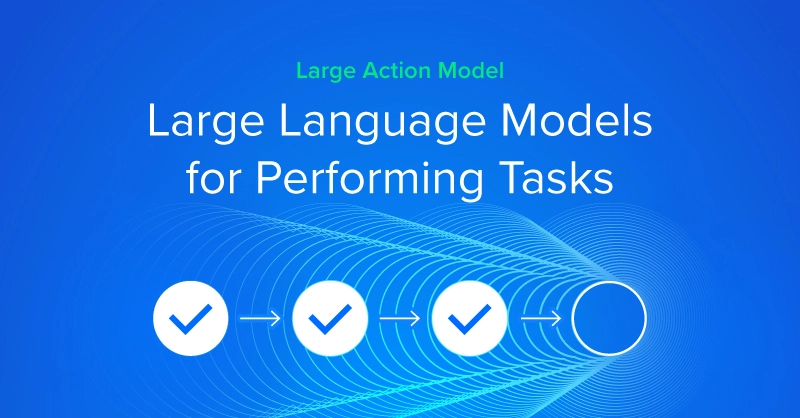
Why AMD EPYC Genoa-X is Huge
Announced today, AMD EPYC Genoa-X is the 3D V-Cache variant added to their family of 4th generation EPYC processors. 3D V-Cache is a cache stacking technology; by stacking L3 cache directly on top of the core die, AMD is able to increase the L3 cache capacity on their CPUs to reduce the memory latency it takes to transfer data back and forth from RAM. EPYC Genoa-X or 9004X is delivered in 3 new SKUs, and it’s more cache in a CPU than we have ever seen before.
| SKU | Cores | Threads | L3 Cache | Boost Clock | Base Clock | TDP (W) |
|---|---|---|---|---|---|---|
| 9684X | 96 | 192 | 1152MB | 3.7GHz | 2.55GHz | 400 |
| 9384X | 32 | 64 | 768MB | 3.9GHz | 3.1GHz | 320 |
| 9184X | 16 | 32 | 768MB | 4.2GHz | 3.55GHz | 320 |
A whole additional 1.1GB of cache is highly performant, especially in large dataset applications like simulation, CFD, AI & deep learning training, and other HPC applications. Phoronix published benchmarking results of AMD EPYC 9684X in various HPC workloads including Exxact favorites like RELION. Against other top SKU CPUs from AMD and Intel, the L3 cache delivered a sizable advantage in various applications despite having lower boost and base clock speeds.

While the 9684X has a high capacity of 96 cores, don’t discount the lower core count 9384X and 9184X. With lower core counts, the core-to-cache ratio is an immense advantage for applications like virtual machines. In the 9384X each core will have 24MB of cache attached to it and in the 9184X, 48MB per core! The lower core count SKUs address enterprise applications that follow a per-core licensing model. Each core has to be fast, and the additional L3 cache per core will lend to its speed and reduction in latency.
If any indication that additional cache even does anything, the Milan-X CPUs are highly sought after in the HPC and server space. Genoa-X, although having a higher startup cost with its new platform, can prove to be a very worthwhile investment for early adopters.
Why AMD EPYC Bergamo is Perfect for the Cloud
Also announced for general availability is AMD EPYC Bergamo. This enterprise CPU stuffs as many cores as possible on the same platform dubbed AMD EPYC 97X4 CPUs.
| SKU | Cores | Threads | L3 Cache | Boost Clock | Base Clock | TDP (W) |
|---|---|---|---|---|---|---|
| 9754 | 128 | 256 | 256 | 3.1GHz | 2.25GHz | 360 |
| 9754S | 128 | 128 | 256 | 3.1GHz | 2,25GHz | 360 |
| 9734 | 112 | 224 | 256 | 3.0GHz | 2.20GHz | 340 |
Core Counts in an EPYC Bergamo reach up to 128 meaning a dual processor configuration goes upwards of 256 cores 512 threads. Check out Phoronix benchmarking results on AMD EPYC Bergamo 9754 on various applications. If EPYC Bergamo is on the same die size package as the other AMD EPYC CPUs, how did they achieve an increase in cores?
By reducing the cache size, AMD EPYC Bergamo cores are smaller and by nature, can now fit more on the die package! This might seem opposite to what the Genoa-X and 3D V-Cache stands for. However, the tradeoffs are different. Those whose workloads aren’t memory intensive, nor need nearly as high clock speeds can leverage the additional Zen 4c cores provided by EPYC Bergamo.

The smaller cores enabled AMD to route the cores differently thus leading AMD to decide to reformat the design to 8 CCDs with up to 16 cores per. The more cores on each CCD, the closer they are in distance resulting in a more efficient design; AMD EPYC Bergamo optimizes for performance per watt for a lower total cost of ownership. Cloud-based workloads, virtualization servers, and other non-highly intensive applications can take advantage of the ample number of efficient cores in Zen 4c.
AMD EPYC Genoa vs. EPYC Genoa-X vs. EPYC Bergamo - The Most Complete CPU Stack
AMD is breaking up its high-performance CPU stack into distinct categories with distinct physical characteristics that enable better performance for each unique use case.
AMD EPYC Genoa (non-X-variant) labeled EPYC 9004 is designed for general-purpose computing workloads. These cores feature higher clock speeds handy for those that need best-performing cores, and/or lots of them. AMD EPYC 9004 lower-core SKUs feature higher clock speeds for accelerating workloads that prioritize single-core performance. Those whose workloads don’t hit memory often, and need the highest frequencies choose AMD EPYC 9004 as the fastest part for their use case due to the higher clock speeds.
AMD EPYC Genoa-X labeled EPYC 9004X is designed for technical computing or HPC. These processors, with the 3D V-Cache, are clocked slower to keep the stacked L3 cache stable. But for users that often need to hit the memory such as large dataset workloads like CFD, weather forecasting, and AI Deep Learning workloads can take advantage of the cached memory. Those that work with large datasets and reference data often will find AMD EPYC 9004X to be the fastest part for their use case based on the massive L3 cache provided.
AMD EPYC Bergamo labeled EPYC 97X4 is designed for cloud-native workloads, or more generally, everything else! These highly dense CPUs feature lower-speed cores that can provide the best computing for workloads that aren’t highly intensive! In those simple tasks, more cores equal more better, especially when you use a single AMD EPYC Bergamo server for a wide gamut of cloud-based workloads. Those whose workloads are predicated on many many light tasks will find AMD EPYC 97X4 to be the fastest part for their use case based on the additional cores.
At Exxact Corporation, we are excited to support these 2 new AMD EPYC lines in our servers and solutions. We offer expansive platform selections that are configurable to match your ideal workload.
Contact us today to learn more about how our experienced engineers can help guide you in the right direction in choosing your next AMD EPYC solution by Exxact.

AMD EPYC Genoa-X and EPYC Bergamo - Best In-Class Performance
Why AMD EPYC Genoa-X is Huge
Announced today, AMD EPYC Genoa-X is the 3D V-Cache variant added to their family of 4th generation EPYC processors. 3D V-Cache is a cache stacking technology; by stacking L3 cache directly on top of the core die, AMD is able to increase the L3 cache capacity on their CPUs to reduce the memory latency it takes to transfer data back and forth from RAM. EPYC Genoa-X or 9004X is delivered in 3 new SKUs, and it’s more cache in a CPU than we have ever seen before.
| SKU | Cores | Threads | L3 Cache | Boost Clock | Base Clock | TDP (W) |
|---|---|---|---|---|---|---|
| 9684X | 96 | 192 | 1152MB | 3.7GHz | 2.55GHz | 400 |
| 9384X | 32 | 64 | 768MB | 3.9GHz | 3.1GHz | 320 |
| 9184X | 16 | 32 | 768MB | 4.2GHz | 3.55GHz | 320 |
A whole additional 1.1GB of cache is highly performant, especially in large dataset applications like simulation, CFD, AI & deep learning training, and other HPC applications. Phoronix published benchmarking results of AMD EPYC 9684X in various HPC workloads including Exxact favorites like RELION. Against other top SKU CPUs from AMD and Intel, the L3 cache delivered a sizable advantage in various applications despite having lower boost and base clock speeds.

While the 9684X has a high capacity of 96 cores, don’t discount the lower core count 9384X and 9184X. With lower core counts, the core-to-cache ratio is an immense advantage for applications like virtual machines. In the 9384X each core will have 24MB of cache attached to it and in the 9184X, 48MB per core! The lower core count SKUs address enterprise applications that follow a per-core licensing model. Each core has to be fast, and the additional L3 cache per core will lend to its speed and reduction in latency.
If any indication that additional cache even does anything, the Milan-X CPUs are highly sought after in the HPC and server space. Genoa-X, although having a higher startup cost with its new platform, can prove to be a very worthwhile investment for early adopters.
Why AMD EPYC Bergamo is Perfect for the Cloud
Also announced for general availability is AMD EPYC Bergamo. This enterprise CPU stuffs as many cores as possible on the same platform dubbed AMD EPYC 97X4 CPUs.
| SKU | Cores | Threads | L3 Cache | Boost Clock | Base Clock | TDP (W) |
|---|---|---|---|---|---|---|
| 9754 | 128 | 256 | 256 | 3.1GHz | 2.25GHz | 360 |
| 9754S | 128 | 128 | 256 | 3.1GHz | 2,25GHz | 360 |
| 9734 | 112 | 224 | 256 | 3.0GHz | 2.20GHz | 340 |
Core Counts in an EPYC Bergamo reach up to 128 meaning a dual processor configuration goes upwards of 256 cores 512 threads. Check out Phoronix benchmarking results on AMD EPYC Bergamo 9754 on various applications. If EPYC Bergamo is on the same die size package as the other AMD EPYC CPUs, how did they achieve an increase in cores?
By reducing the cache size, AMD EPYC Bergamo cores are smaller and by nature, can now fit more on the die package! This might seem opposite to what the Genoa-X and 3D V-Cache stands for. However, the tradeoffs are different. Those whose workloads aren’t memory intensive, nor need nearly as high clock speeds can leverage the additional Zen 4c cores provided by EPYC Bergamo.

The smaller cores enabled AMD to route the cores differently thus leading AMD to decide to reformat the design to 8 CCDs with up to 16 cores per. The more cores on each CCD, the closer they are in distance resulting in a more efficient design; AMD EPYC Bergamo optimizes for performance per watt for a lower total cost of ownership. Cloud-based workloads, virtualization servers, and other non-highly intensive applications can take advantage of the ample number of efficient cores in Zen 4c.
AMD EPYC Genoa vs. EPYC Genoa-X vs. EPYC Bergamo - The Most Complete CPU Stack
AMD is breaking up its high-performance CPU stack into distinct categories with distinct physical characteristics that enable better performance for each unique use case.
AMD EPYC Genoa (non-X-variant) labeled EPYC 9004 is designed for general-purpose computing workloads. These cores feature higher clock speeds handy for those that need best-performing cores, and/or lots of them. AMD EPYC 9004 lower-core SKUs feature higher clock speeds for accelerating workloads that prioritize single-core performance. Those whose workloads don’t hit memory often, and need the highest frequencies choose AMD EPYC 9004 as the fastest part for their use case due to the higher clock speeds.
AMD EPYC Genoa-X labeled EPYC 9004X is designed for technical computing or HPC. These processors, with the 3D V-Cache, are clocked slower to keep the stacked L3 cache stable. But for users that often need to hit the memory such as large dataset workloads like CFD, weather forecasting, and AI Deep Learning workloads can take advantage of the cached memory. Those that work with large datasets and reference data often will find AMD EPYC 9004X to be the fastest part for their use case based on the massive L3 cache provided.
AMD EPYC Bergamo labeled EPYC 97X4 is designed for cloud-native workloads, or more generally, everything else! These highly dense CPUs feature lower-speed cores that can provide the best computing for workloads that aren’t highly intensive! In those simple tasks, more cores equal more better, especially when you use a single AMD EPYC Bergamo server for a wide gamut of cloud-based workloads. Those whose workloads are predicated on many many light tasks will find AMD EPYC 97X4 to be the fastest part for their use case based on the additional cores.
At Exxact Corporation, we are excited to support these 2 new AMD EPYC lines in our servers and solutions. We offer expansive platform selections that are configurable to match your ideal workload.
Contact us today to learn more about how our experienced engineers can help guide you in the right direction in choosing your next AMD EPYC solution by Exxact.

.jpg?format=webp)


